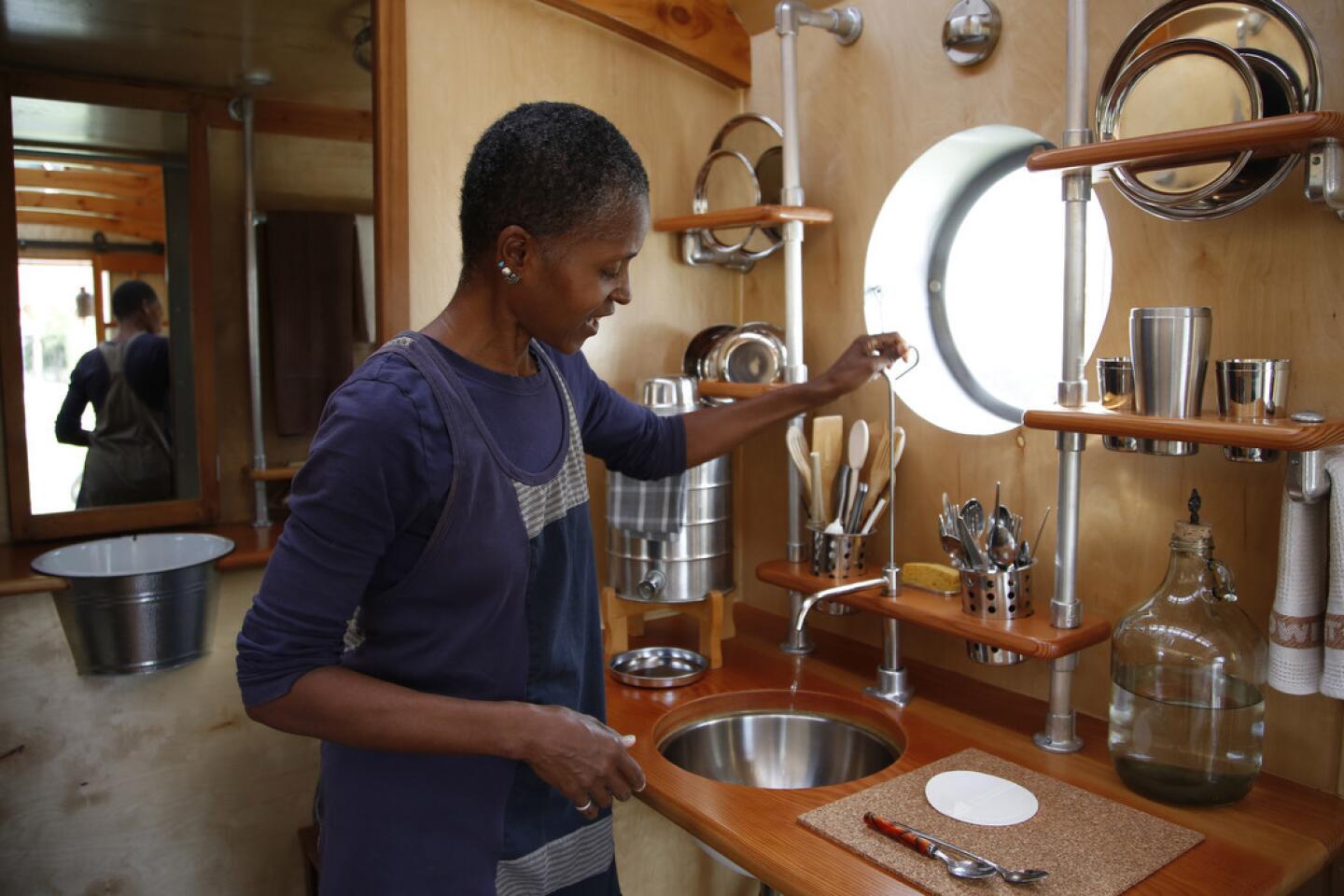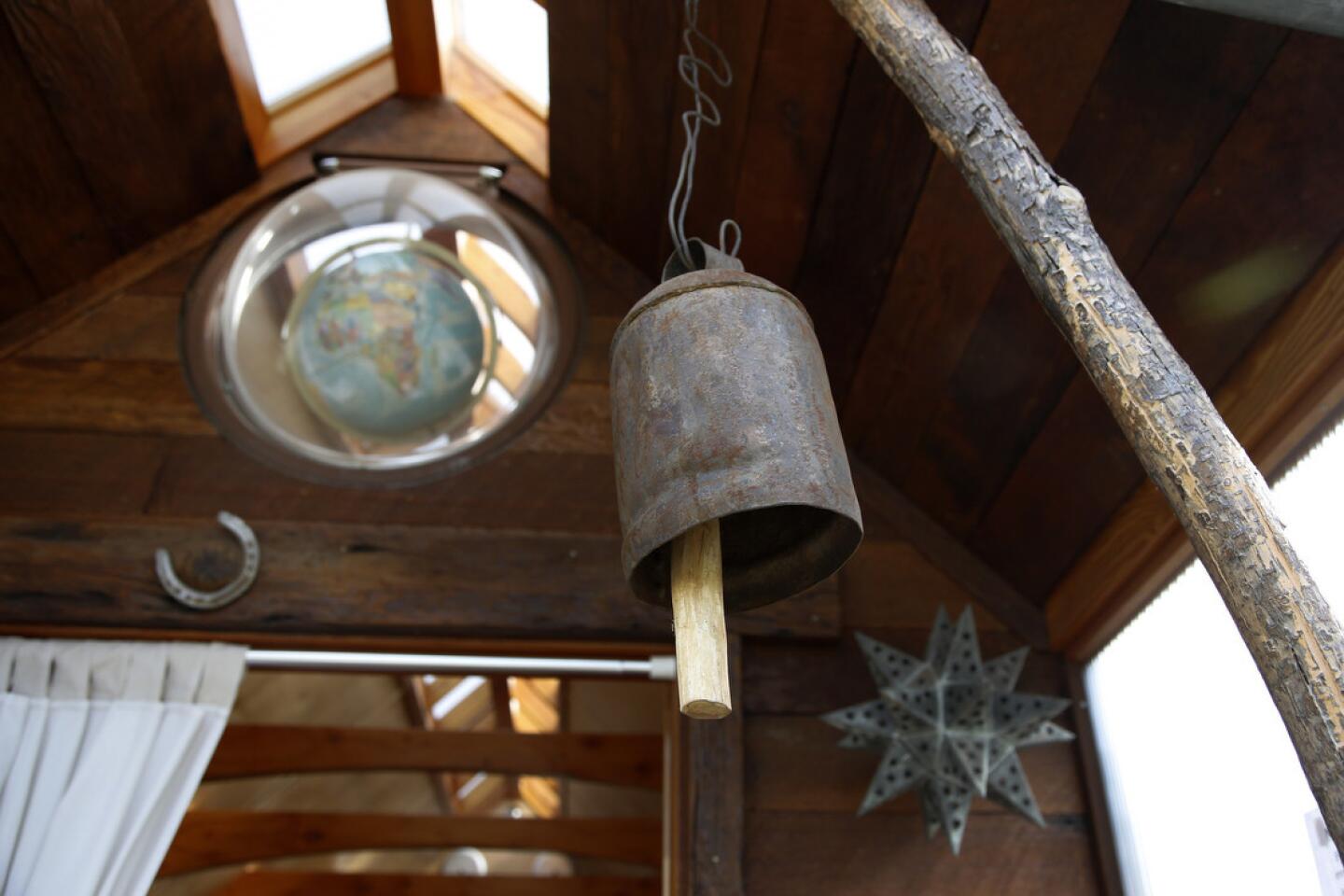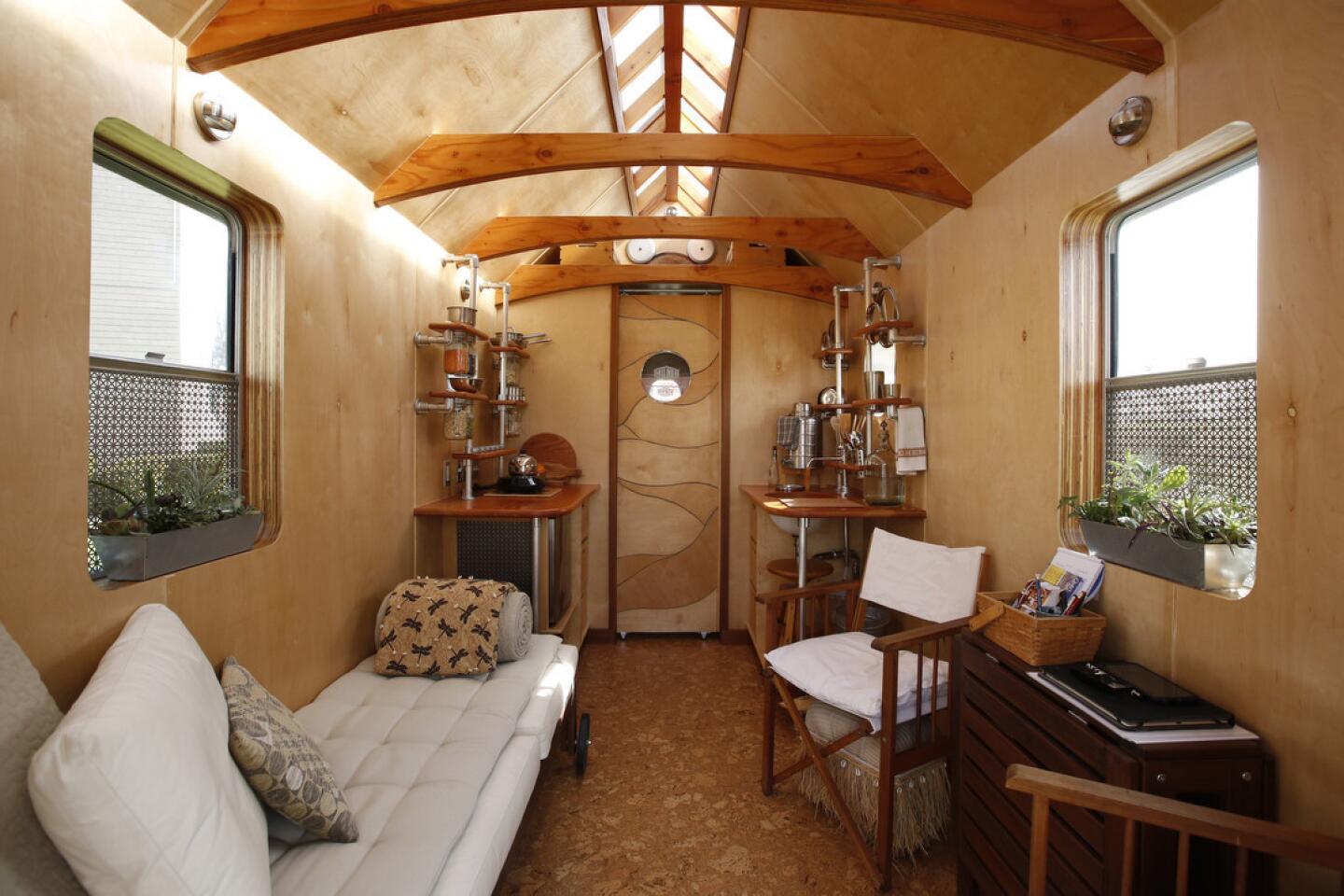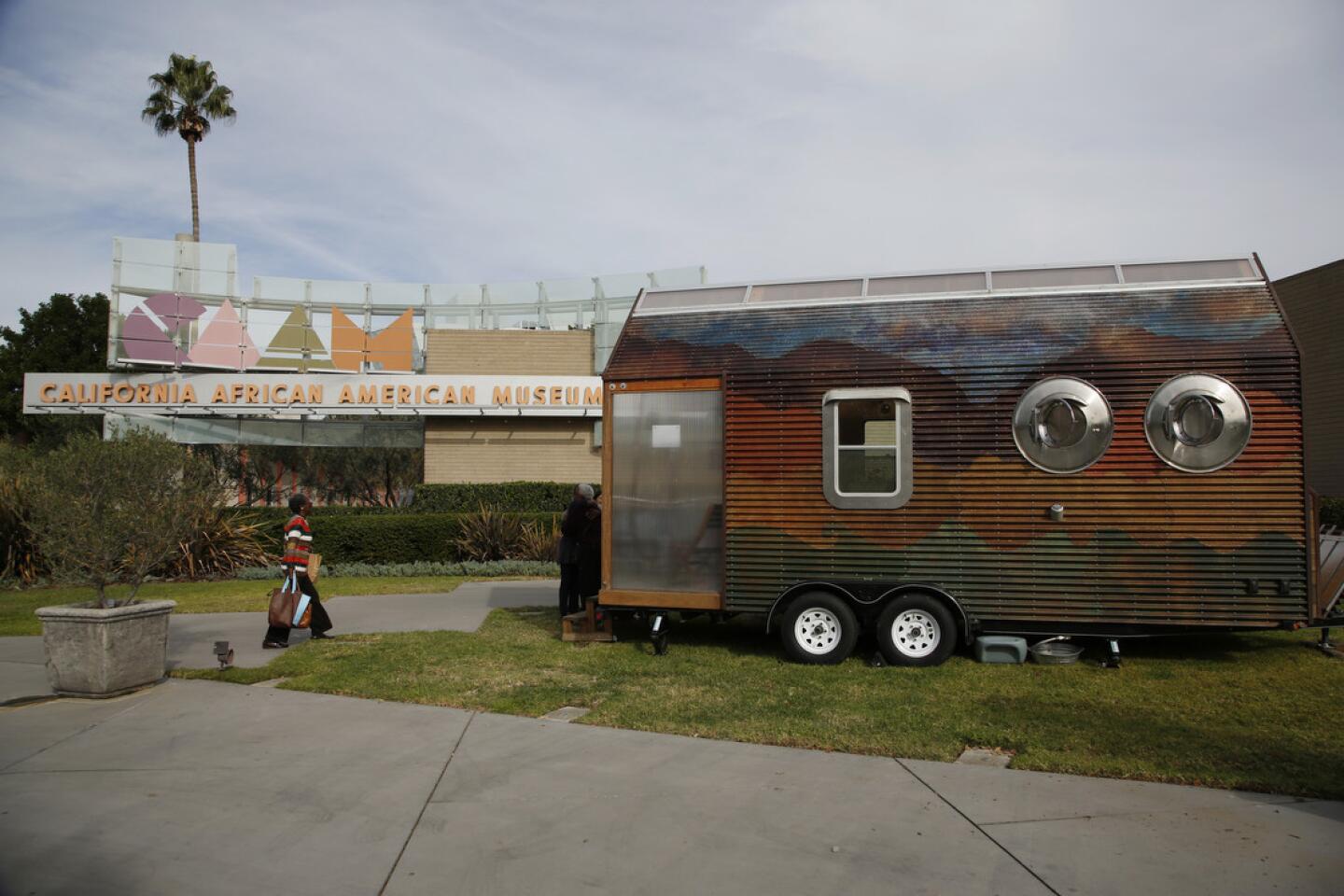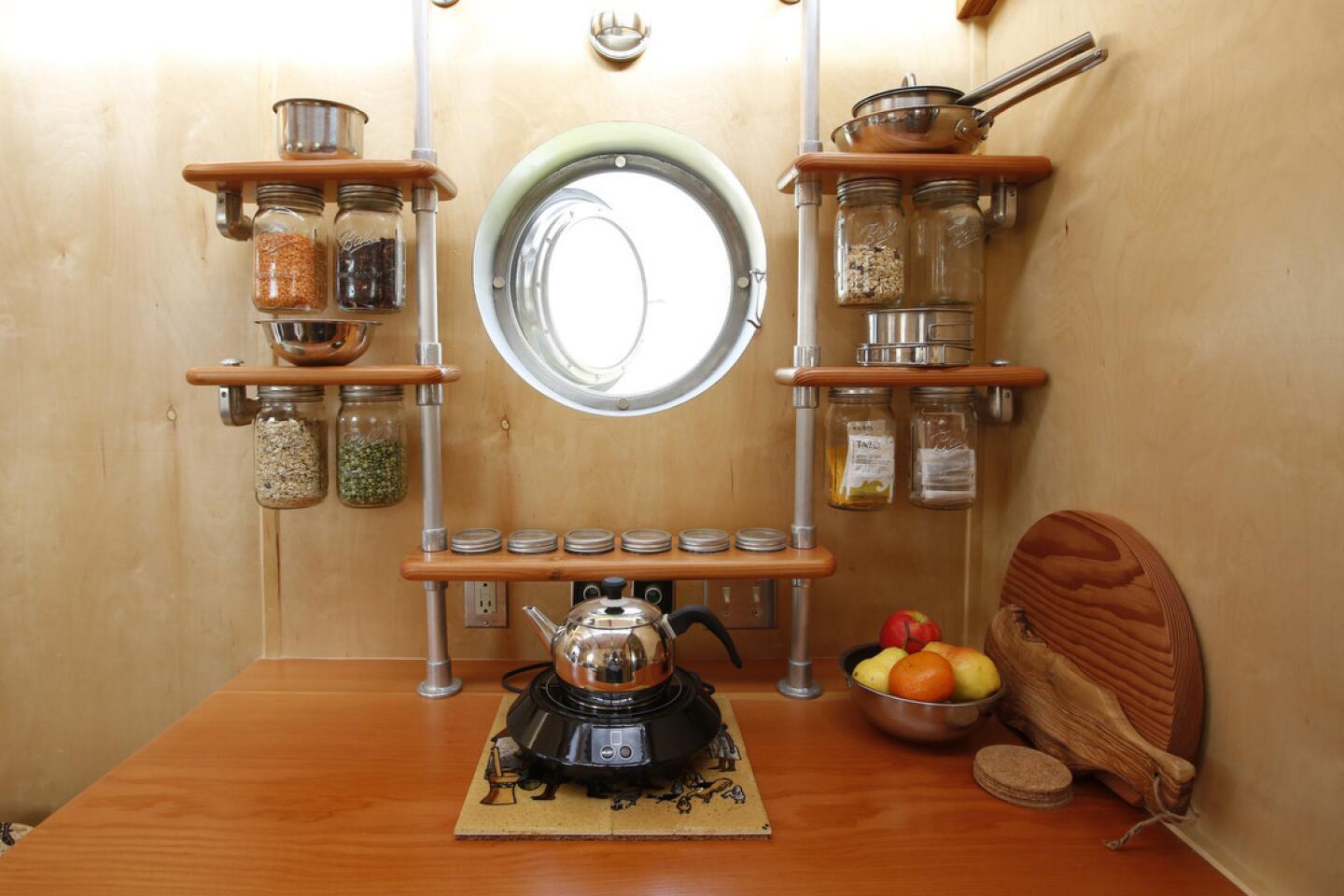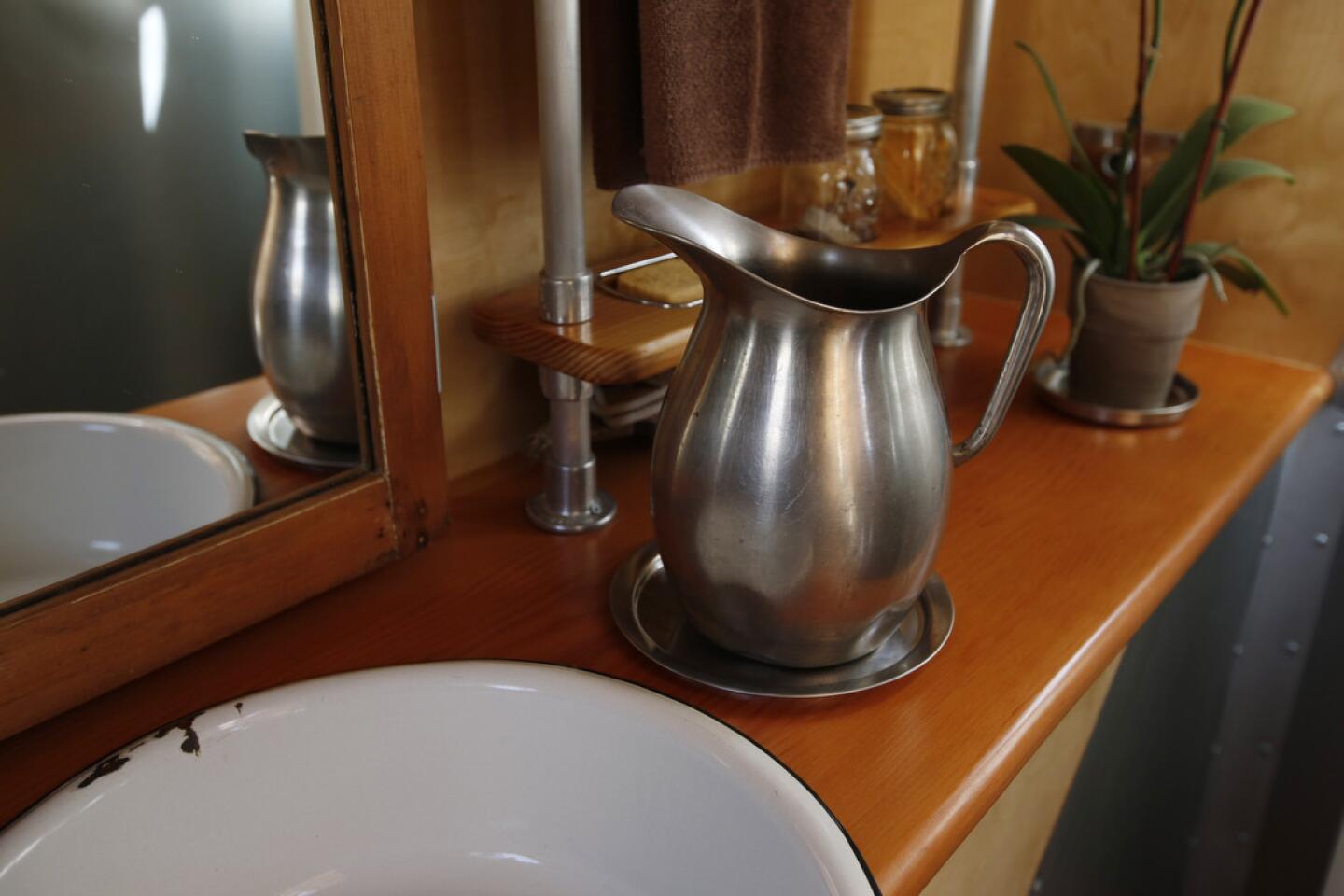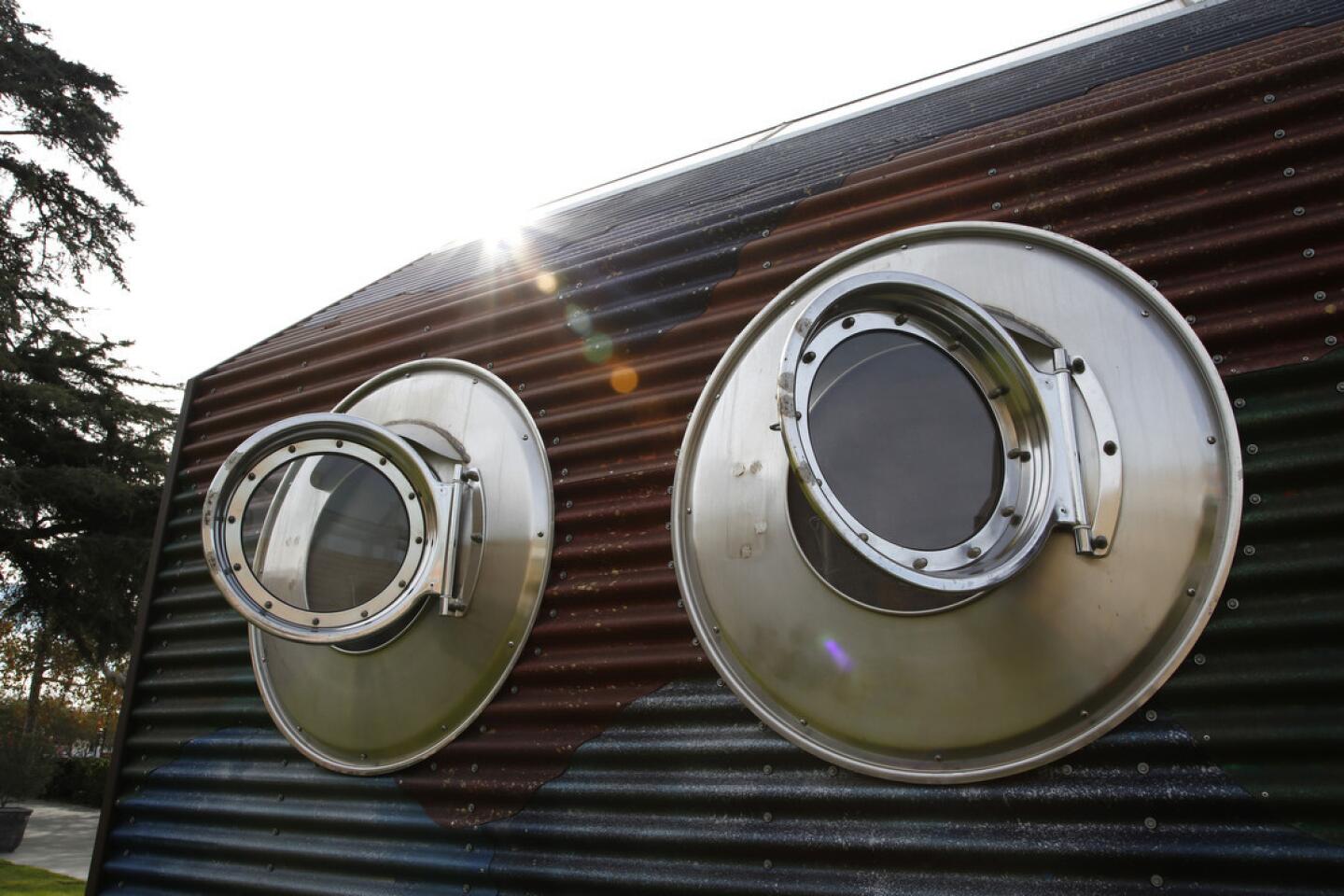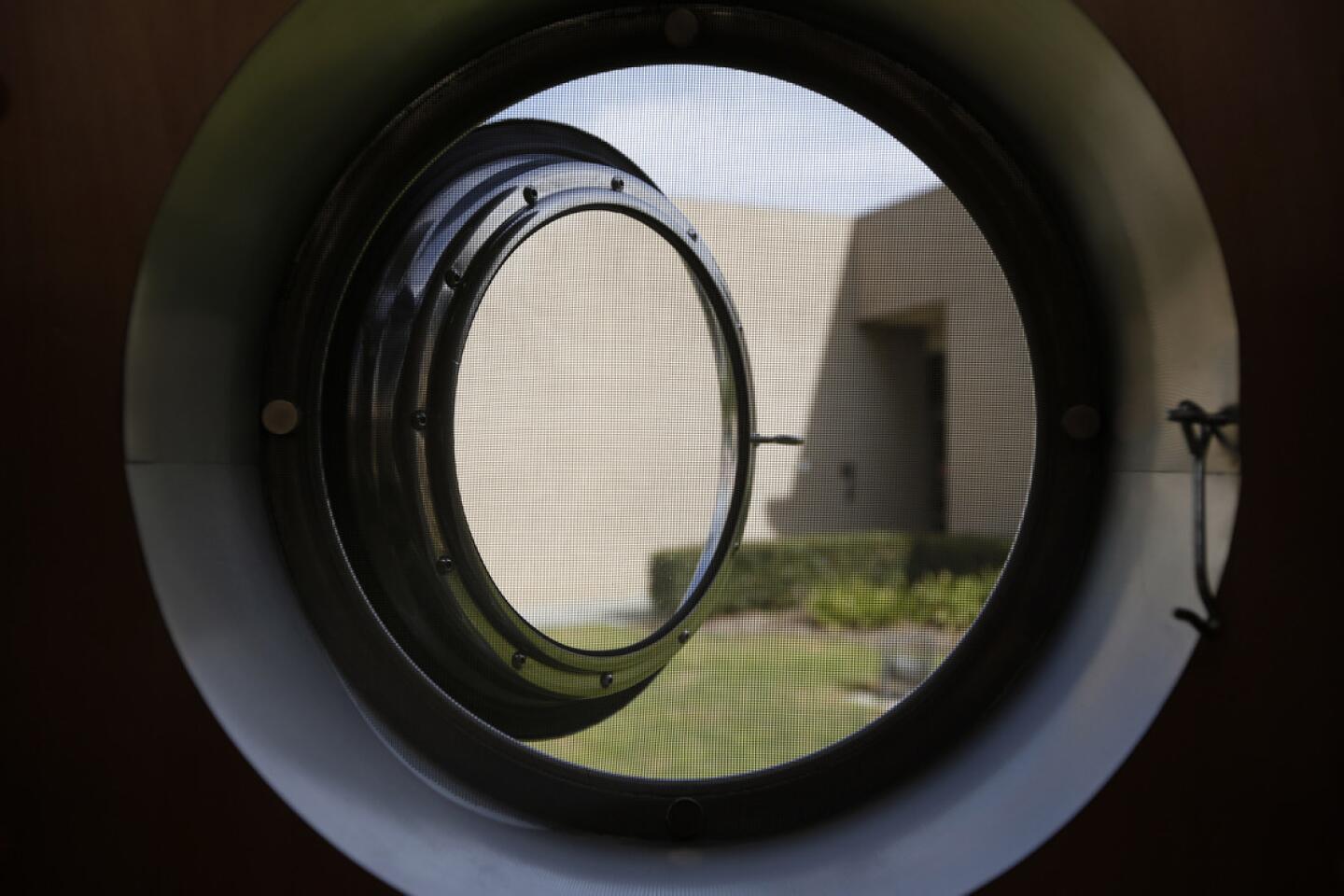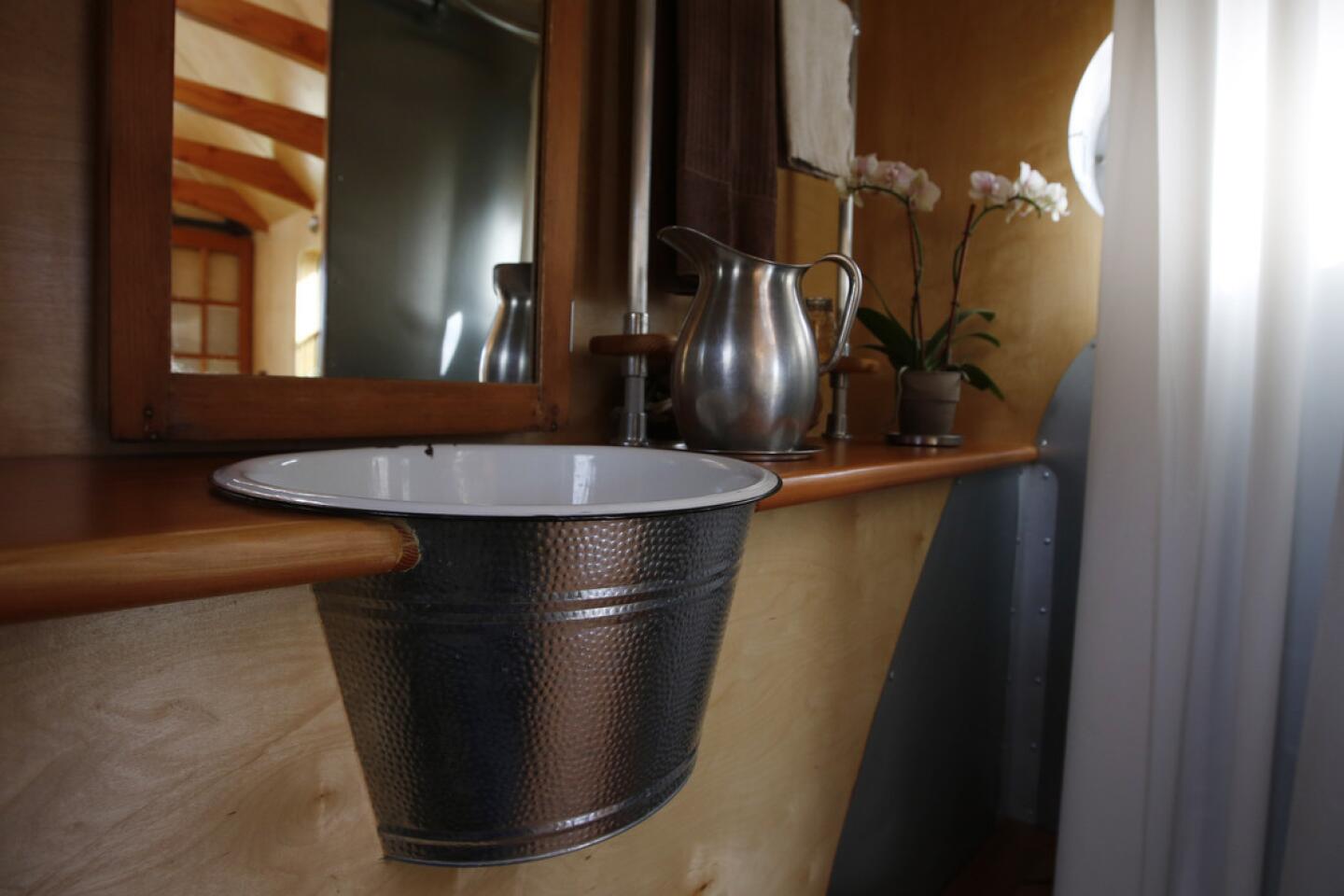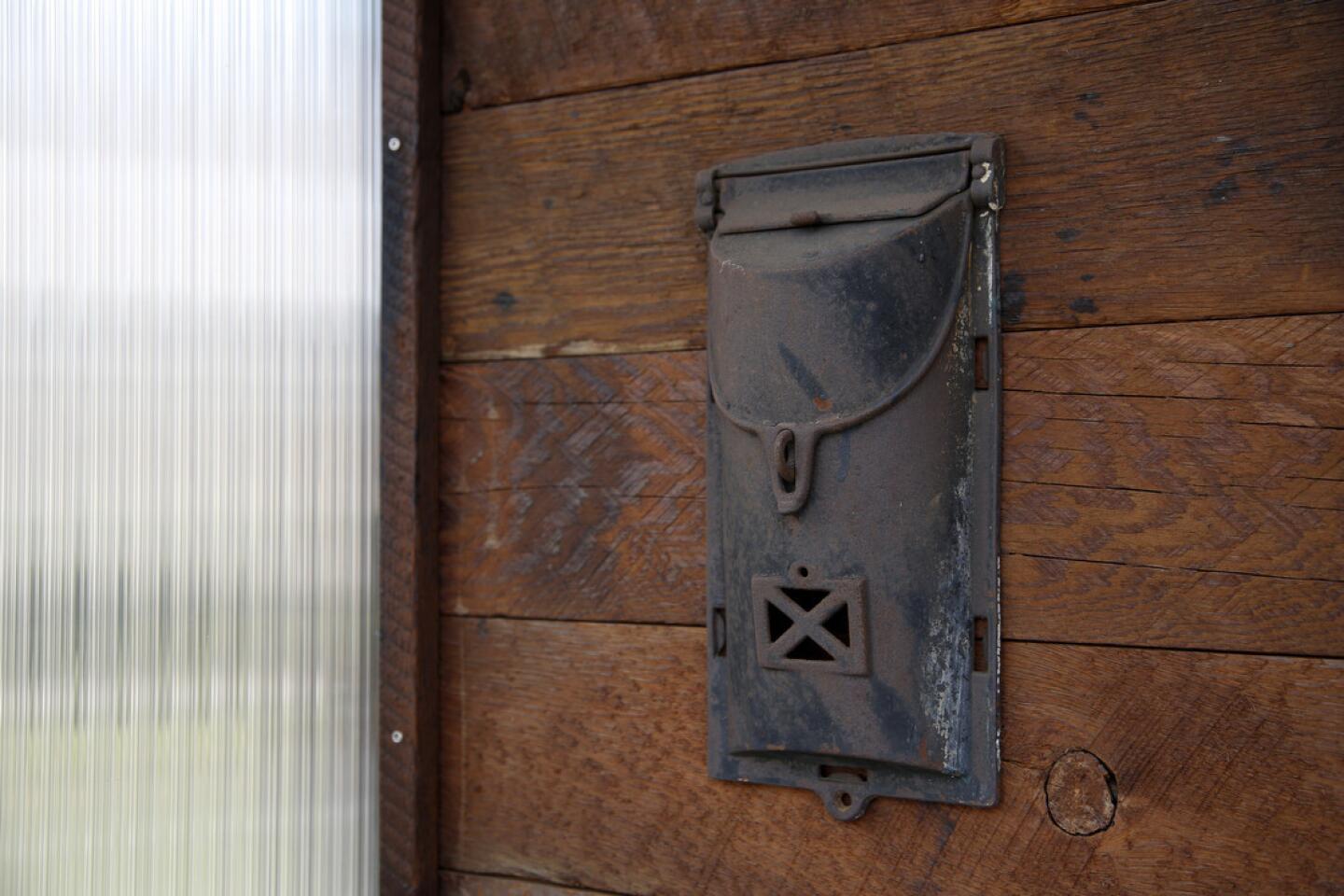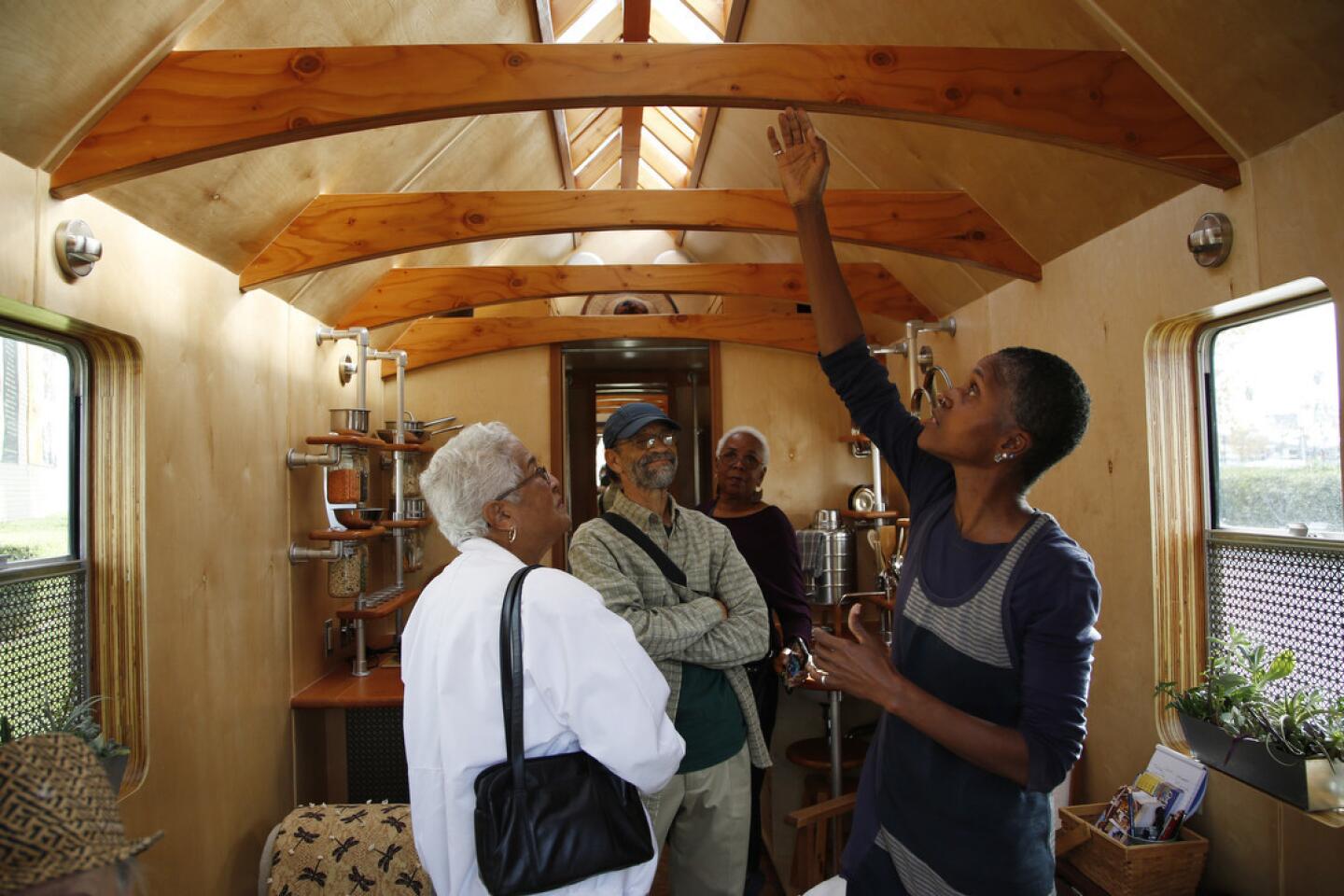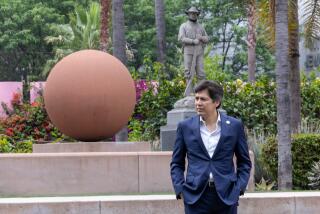What Dominique Moody’s tiny ‘Nomad’ house says about the environment and African American design
- Share via
For the next four days, there will be a curious structure parked on the lawn of the California African American Museum (CAAM) in Exposition Park: a roughly 100-square-foot home on wheels built from found objects by Los Angeles artist Dominique Moody.
“Nomad,” as the piece is called, is a functioning tiny house that is also a work of art -- a practical piece of assemblage painstakingly crafted from bits of recycled redwood and Douglas fir, old hand railings, scraps of metal and the many other castoffs (vintage wash tins, a crate of mason jars, a Tibetan meditation bell) that Moody has come across in her travels.
“It has been a way to celebrate my 20 years of being in L.A. as an artist, to accomplish what I feel is my most pivotal work,” Moody says. “As an artist, I’m living inside my own artwork.”
The Nomad -- an acronym for Narrative, Odyssey, Manifesting, Artistic, Dreams -- is indeed Moody’s full-time home. (She is generally parked at the Zorthian Ranch in Altadena.) And through Saturday, she’s hosting an open house on the lawn of CAAM, where visitors are invited to stop in, chat with the artist and see her exquisite mobile dwelling. As part of the residency, she will also host a workshop on assemblage on Saturday afternoon. (RSVP required.)
For Moody, the daughter of an Army officer who had a peripatetic life growing up, the Nomad is as much a tribute to her own itinerant artist’s life as it is a statement about the history of American architecture and our environmentally damaged present. (It was an idea she explored conceptually in the 2009 exhibition called “An Idea Called Tomorrow,” a collaboration between CAAM and the Skirball Cultural Center.)
The simple, gabled structure that Moody has spent the last three years constructing -- with the aid of countless collaborators and patrons -- is inspired by the shotgun houses historically built and inhabited by Africans and their descendants in the United States.
“These houses are the most economical to build,” she explains. “They don’t have hallways traditionally. That saves in material and resources. And those resources constantly change. It can be earthen in West Africa. And then it can go into the Caribbean and be [made] with a different material. And then it can go a little further into New Orleans and have this French influence. So it’s a migration house. And it’s often built off the ground because we didn’t own the land -- so it’s movable.”
As a nod to these influences, Moody’s Nomad features a prominent porch -- a prototypical American architectural feature that also has African roots.
“The porch did not exist in European architecture in this way,” she says. “It was a way to connect public and private space with a transitional area in between. So that’s why [there’s] the culture of the porch: to tell stories, to share with neighbors, to watch over the neighbor’s kids in the street.”
Put together a cluster of shotgun houses with their generous porches and the effect is that of an African village, she explains.
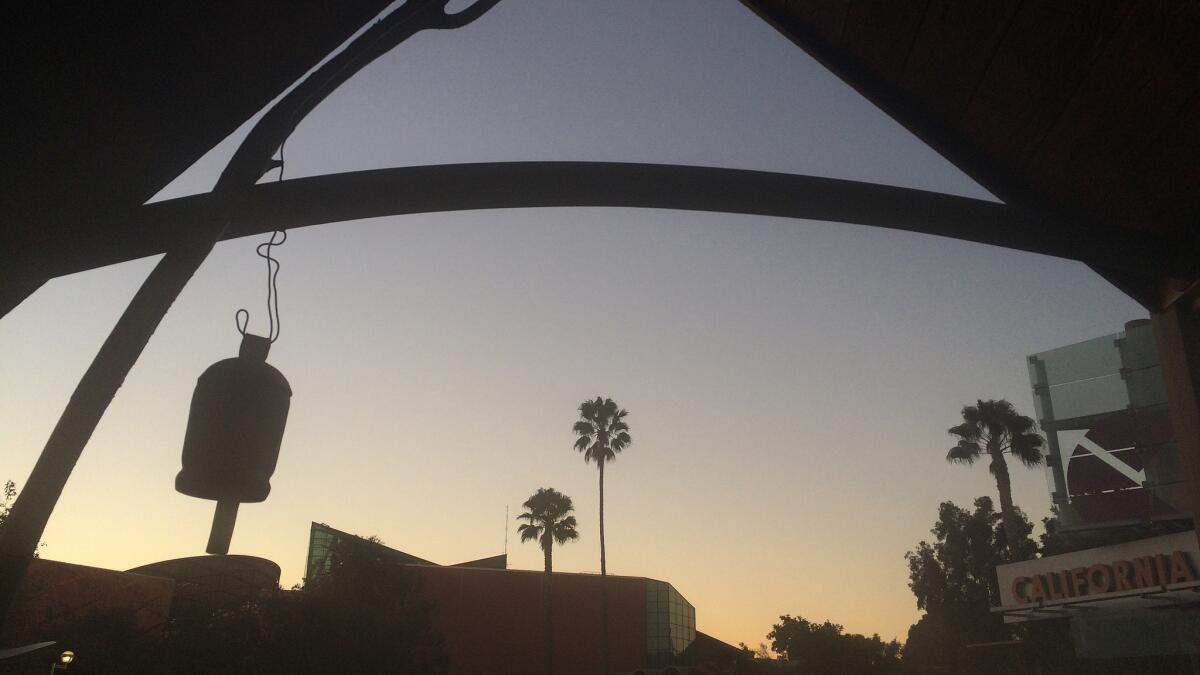
Shown is the view from the porch of Dominique Moody’s “Nomad,” as the sun sets in the West. To the left is the silhouette of the Tibetan bell.
But Moody’s project is also a nod to the future -- one of environmental challenges wrought by human over-consumption.
The Nomad is made out of recycled materials: rich bits of wood harvested from architectural remnants and industrial washing machine doors given new life as windows. It occupies a small footprint. Its use of water and power is minimal. There are solar panels for electricity and Moody bathes with a small camping shower. The rounded kitchen sink cleans dishes in just 16 ounces of water.
“We know that we have a planet that is in jeopardy -- that it is ill,” says Moody. “We also know that we are not healthy either. So it starts in the home. If we can get healthy in the home, we can get healthy in the planet.”
Historic architecture may provide answers to today’s problems, she says.
“We’re talking about a housing crisis and shelters and affordable living space ... and at the same time we’re talking about climate change and having a smaller carbon footprint,” she says. “We can [use] the past to look at the future and therefore be in the vanguard of that.”
Since completing the Nomad earlier this year, Moody has taken her traveling home to events in Leimert Park, Watts, Altadena and the 18th Street Arts Center in Santa Monica. “I spent seven days there,” she says of the latter, “living in an alleyway.”
Now her hope is to take it cross-country. Moody, who is legally blind, can’t drive. (She has only 40% of her vision due to a genetic macular degeneration condition that she has had since her 20s.) But she says that she imagines she will be able to find a willing collaborator once she is ready to travel.
“I decided, ‘Build it first,’” she says with a grin, “‘and you will find that person later on.’”
Dominique Moody’s “Nomad” will be on view at the California African American Museum through Saturday. On Saturday, from 1 to 3 p.m., the artist will host a workshop on found object assemblage. Space is limited; RSVP at (213) 744-2024. 600 State Drive, Exposition Park, Los Angeles, caam.org.
Twitter: @cmonstah
More to Read
The biggest entertainment stories
Get our big stories about Hollywood, film, television, music, arts, culture and more right in your inbox as soon as they publish.
You may occasionally receive promotional content from the Los Angeles Times.
